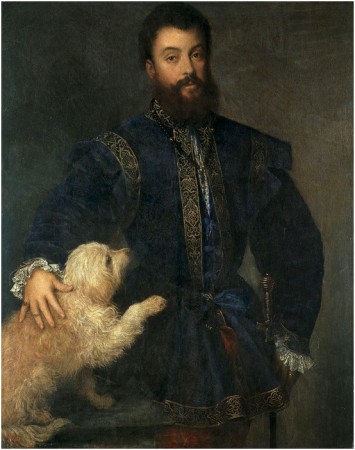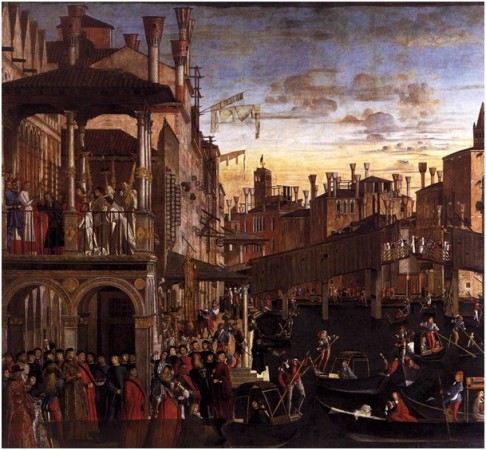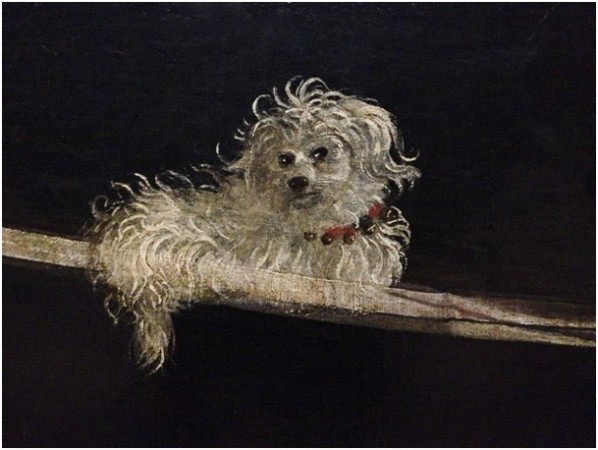Both Plato and Socrates wrote about little white dogs, precious as jewels, who were brought to Greece, and many other Mediterranean countries, by sailors coming from the Isle of Malta. They were small, all white, black nose, eyes, eyelids and lips. Those dogs were the ancestors of our Bichon type dogs: Bolognese, Havanese, Coton de Tulear, Maltese and the Bichon Frise, of course.
This beautiful companion dog has very ancient origins that date back several centuries ago (perhaps around 1200). Just for the historica curiosity – according to Darwin bichons existed already 6000 year before Christ.
Bolognese belongs to the group of Bichons (lap dogs) which consists of Bichon a poil frise, Bichon petit chien lion – Lowchen, Bichon Havanais, Coton de Tulear, Maltese and Bolognese.
Bolognese were already known in ancient Egypt and Phoenicia and were probably brought to Italy by travelers during the 13th century.
Bolognese got its’ name after the beautiful city of Bologna where breeding of this lovely dogs started. Many French authors called the breed “Chien de Boulogne”.
In the ancient Italian city of Bologna, these small, white dogs became a favorite of the aristocracy. Traders sometimes received the equivalent of the dog’s weight in gold as payment, so they were quite valuable. The Bolognese were favorites of well-born Italian women and became mandatory fashion accessories. They were pampered, perfumed, and adorned.
Even in the moment of greatest splendor of the Bolognese in the Renaissance he never was very popular outside the courts and palaces like those of dei Gonzaga, dei Medici and degli Estensi. The Gonzagas, a noble family that ruled parts of Italy between 1328 and 1708, bred Bolognese in their estates. Also Cosimo de Medici (1389-1464), an influential Florentine citizen and an important patron of the Italian Renaissance bred Bolognese.
A pampered companion pet, favored by Italian Nobility for their lap warming and entertaining abilities, Bolognese came to be celebrated as the most appreciated of royal gifts that one aristocrat could give to another.
Foreign royalty loved bolognese when they met them so many bolognesi were given as precious gifts to foreign nobility. In 1668 his descendant Cosimo III de Medici gave eight bolognesi as the precious gift to the Belgium nobility. King Umberto II crown prince gave a pair bolognesi to his future wife Maria Jose from Belgium. The Duke d’Este gave King Philipe II of Spain (1556 to 1598) two Bolognese as gifts. The King thanked the Duke in writing saying “that these two little dogs are the most royal gifts one can make to an emperor.
Many historical personalities were proud owners of the little Italian Bolognese beauty: king Philipe II, Madame Pompadour (1721-1764), Catherine the Great of Russia (1729-1796), and Maria Therese, Empress of Austria (1717-1780).
Their popularity continued during the time of Kings Louis XIV and XV, well into the 19th century. Master artists Tizian, Carpaccio, Goya, Watteau, Drouais, Bosse, Gozzoli, Durer and other well-known artists immortalized them in paintings. Ordinary citizens had no chance to own one of these small dogs, so after the downfall of Europe’s aristocracy, the revered dog also fell from favor.
With the end of the age of nobility and the prevalence of horrors in the aftermath of World War II, the Bolognese nearly became extinct. Italian breeders Gian Franco Giannelli and del Leone Fiammingo Kennel, along with other dedicated European breeders restored the breed and did all they could to keep it from dissapearing.
In more modern days, Marilyn Monroe was given a little dog Sinatra bought from an Italian breeder. In the early 50’s this breed was unknown in this country so people said he was a Poodle. Monroe named the little dog Mafia, Maf for short, because of Sinatra’s well known links with the Mafia. Maf was with Marilyn Monroe on the night she was killed and was adopted by her agent’s secretary.
Today the Bolognese is a companion breed which becomes very attached to its master and their family. He makes a fantastic family dog as he is very active and fun outside, but on return to the house the Bolognese is quiet and shadows his owner. It is a beautiful breed that was once fancied by the nobility but are now popular with many people from all walks of life and who love the company of this little, loyal breed. Some bolognese makes wonderful pet therapy dogs and are used in obedience and agility.
Bolognese in art






